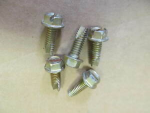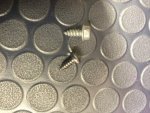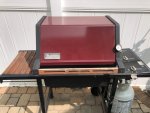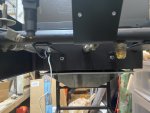If you remove the "large" fitting from the manifold, you can then screw in the new hose directly into the manifold. Make sure you use some gas approved pipe dope on the fitting however.
That fitting currently on the manifold is a 1/8" npt to 3/8" flare adpater. Most hoses with regulators use that flare connection and that is why it is on there. Follow this great how to install the new hose after you remove the 3/8" flare adapter.
UPDATED 9/18/20: A demonstration of how to replace the regulator in a Weber Genesis 1000 propane gas grill.

tvwbb.com











